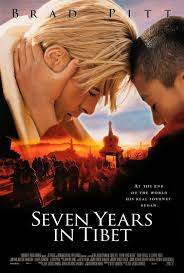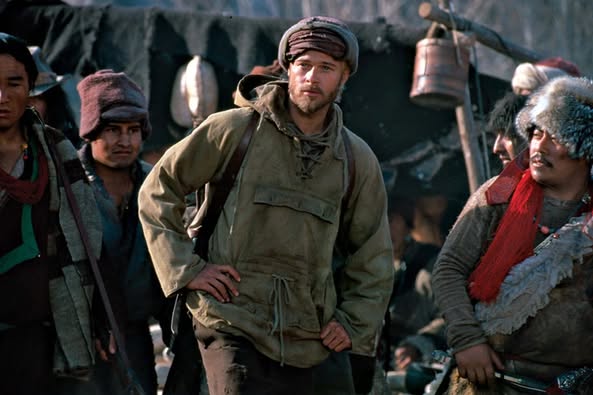Seven Years in Tibet (1997)

Seven Years in Tibet is a 1997 drama film directed by Jean-Jacques Annaud, based on the memoir of the same name by Heinrich Harrer. Starring Brad Pitt as Harrer, the film chronicles the true story of a German mountaineer who, during World War II, finds himself in Tibet and develops a profound relationship with the young Dalai Lama.
Set against the breathtaking backdrop of the Himalayas, the film begins with Harrer’s journey to climb Nanga Parbat in 1939. However, his plans are derailed when he is captured by British forces and interned in India. Seizing the opportunity to escape, he makes his way to Tibet, where he aims to find solace and purpose.

Once in Tibet, Harrer encounters a culture vastly different from his own. Initially driven by self-interest, he gradually becomes immersed in Tibetan life and spirituality. His relationship with the Dalai Lama (played by Jamyang Jamtsho Wangchuk) becomes the film’s emotional core. The two form a deep bond, with Harrer serving as a mentor and friend to the young leader, who is grappling with the responsibilities of his position.
Pitt delivers a compelling performance, capturing Harrer’s transformation from a self-centered adventurer to a more reflective and compassionate individual. The film explores themes of personal growth, cultural exchange, and the impact of war on human lives. As Harrer witnesses the encroachment of Chinese influence in Tibet, the narrative also touches on the broader political context, highlighting the fragility of Tibetan culture.

The cinematography is stunning, showcasing the majestic landscapes of Tibet and the stark beauty of the mountains. The visuals enhance the film’s contemplative tone, inviting viewers to reflect on the spiritual journey of the characters. The film’s score, composed by John Williams, further elevates its emotional resonance, complementing the narrative’s themes of friendship and enlightenment.
Seven Years in Tibet received mixed reviews from critics, with some praising its visual splendor and performances, while others critiqued its pacing and adaptation of historical events. Nonetheless, it has garnered appreciation for its portrayal of Tibetan culture and its exploration of the bond between Harrer and the Dalai Lama.

In conclusion, Seven Years in Tibet is a visually stunning film that tells a powerful story of friendship, personal transformation, and cultural understanding. Through its engaging narrative and memorable performances, the film invites audiences to reflect on the importance of compassion and the profound impact of human connections across cultural divides. It remains a notable entry in the genre of biographical dramas, celebrating the richness of Tibetan heritage and the enduring spirit of its people.











